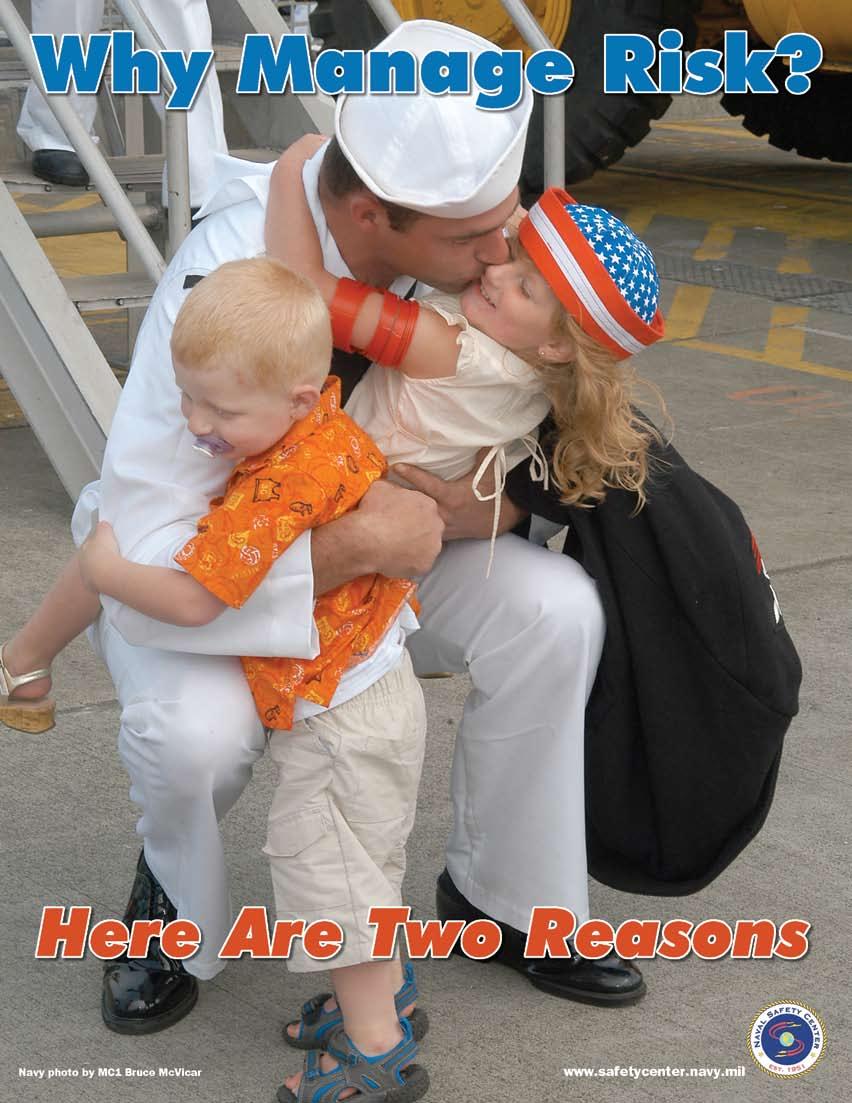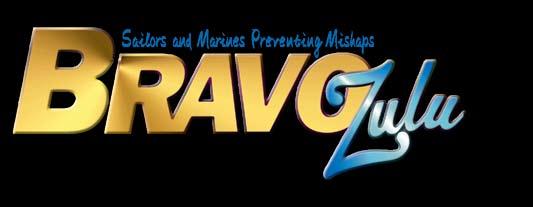
22 minute read
24
of fleet aircraft squadrons. Today, they provide sustainment, logistic support, and training for support equipment. Their mid-term priorities focus on replacing aged and obsolete gear that is no longer serviceable, and they have modernization road maps for where they are going. Long-term plans include a fleet-prioritization process that identifies equipment for future replacement.
All their programs go through a rigorous acquisition cycle. Everything is tested environmentally (shock, vibration, EMI) to make sure the gear will function safely in the harsh environments in which fleet Sailors and Marines operate. PMA260 is reducing the supportequipment footprint throughout the fleet by combining multiple testers, which reduces inventory, maintenance, and calibration requirements. Reduction of maintenance requirements directly affects the safety of Sailors and Marines by reducing their already busy workload.
Advertisement
PMA260’s efforts are not only saving taxpayer dollars; they are making maintenance work environments safer, easier, and better. Their program office has made cost reductions through reliability-centered maintenance efforts (monitoring trends and adjusting their process to reduce man-power requirements and maintenancedocumentation processes). One example of cost savings through reduced footprint is seen with the O-level weapons release-and-control test sets. They are replacing nine different testers with only one. Over the years, different platforms have bought their own individual testers, which led to increased maintenance, training, and manpower requirements.
Captain Belcher thinks it’s important for the fleet to know what PMA260 is doing for them and to understand that the gear being fielded to them has been put through a rigorous acquisition cycle. This cycle includes design reviews, environmental testing, and a thorough test and evaluation of all the logistic elements. PMA260 makes sure that your support equipment works properly and that it’s supportable.
PMA260’s logo states, “There is no air support without ground support.” They are committed to modernizing common support equipment, including CASS, obsolescence, making common support equipment (CSE) better for the operator, removing legacy automatic test equipment (ATE) and CSE, and reducing the amount of CSE needed in the fleet. See a video and find out more about PMA260 and how they are working to help Sailors today, in the near-term, and the long-term, by visiting our website at www.safetycenter.navy.mil. Also, look for future articles in the Air-Wing toolbox section of Mech.
LCdr. Ruane is the strategic planning division head and Mech magazine editor at the Naval Safety Center.
Flight, Flight-Related, and Ground Class A and B Mishaps 9/12/2008 to 12/08/2008 Class A Mishaps Date Type Aircraft Command
09/15/2008 AH-1W HMLA-269 Aircraft crashed in desert during weapons delivery. 10/04/2008 FA-18F VFA-103 (was VF-103) Superhornet struck flight-deck director during cat stroke resulting in fatality. 10/04/2008 HH-60H HSC-84 Dash 2 hit dash 1 while landing at night on goggles. 10/20/2008 OH-58C Aircraft rolled over and was destroyed. NAVTESTPILOTSCH
10/20/2008 P-3C VPU-1 Orion departed the runway after landing. 10/27/2008 MH-60R HSM-71 Sonar transducer separated from aircraft while dipping. No injuries. 12/08/2008 FA-18D VMFAT-101 Hornet crashed on final to homefield. Pilot ejected. Injury-TBD.
Class B Mishaps Date Type Aircraft Command
09/16/2008 T-45A COMTRAWING 2 Goshawk engine FODed during high-power maintenance turn. No injuries. 09/24/2008 FA-18E VFA-122 Starboard engine FODed during night ops resulting in engine flameout. 10/25/2008 AV-8B HMM-264 Leading edge root extension separated from aircraft. No injuries. 11/09/2008 MH-60S HSC-8 Tip caps impacted tail boom while on night-training flight. 11/11/2008 SH-60F HS-14 Cable departed sonar reeling machine. Transducer lost at sea. 11/13/2008 TH-57B HT-8 Aircraft rolled over while practicing full autorotation. No injuries. 11/14/2008 E-2C+ VAW-77 Hawkeye departed taxiway after brake failure during landing. 11/17/2008 EA-18G Port engine fire during flight. VX-9
11/21/2008 UH-1Y VX-31 No 2 engine drove main rotor and No. 1 engine to exceed limits. No injuries. 12/03/2008 T-45C VT-22 Engine overspeed during run up for takeoff. No injuries.
Printed as a supplement to Mech from Naval Safety Center Data Cdr. Paul Bunnell For questions or comments, call LCdr. John Ruane (757) 444-3520 Ext. 7220 (DSN 564)
Send BZs to: SAFE-Mech@navy.mil
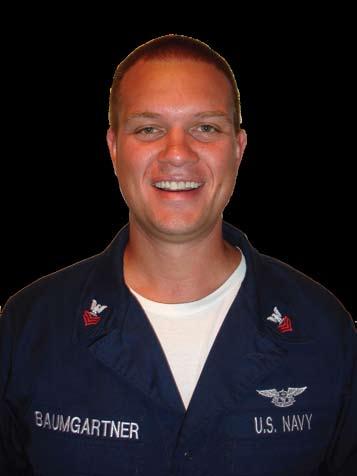
BZ of the Quarter
immediately intervened and stopped the flight-deck petty officer from moving the Super Hornet any farther.
When the F/A-18F stopped, its nose was within two feet of the turning E-2C propeller. Petty Officer Baumgartner’s quick actions narrowly averted a mishap which could easily have injured or killed a number of Sailors.
AM1(AW) John Baumgartner VAW-126
During an E-2C low-power engine turn on USS Harry S. Truman (CVN-75), Petty Officer Baumgartner noticed a tractor driver moving an F/A-18F inside the E-2C safety chain. Initially, another petty officer in the Hawkeye safety chain told the tractor driver to stop. That petty officer turned his attention back to his duties in the safety chain and subsequently felt the tractor push against him and through the safety chain. Petty Officer Baumgartner
Cpl. Philip Moores VMM-162
During a 35-hour inspection on Yankee Sierra 05, Cpl. Moores found small metal shavings near the prop-rotor gearbox. Realizing something was wrong, he meticulously searched for the source of the shavings. He found a deep, inch-long groove in the non-rotating ring of the swashplate. The groove was caused by a bolt from the gimbal ring, which had come loose, damaged the swashplate, and subsequently broke in half.
If Cpl. Moores had not detected this failure, the swashplate likely would have failed during subsequent flights.
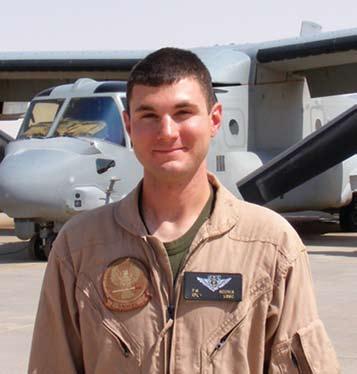
AM2 Eugene Estella CMO-2 MDT B
Petty Officer Estella was turning the elevator-trim wheel on a P-3 aircraft when he felt some resistance. Upon reaching the stop, he began rotating the trim wheel in the opposite direction and still felt a slight bind. He went inside to notify QA.
A visual inspection inside the rear empennage revealed a snapped elevator cable; the other cable was bunched up and tangled around the cable drum. These problems could have caused the flight controls to fail.


AT3 Patrick Larivee HSL-44
After completing daily and turnaround inspections on an SH-60B aboard USS McInerney (FFG-8), Petty Officer Larivee noticed black fluid leaking from the starboard main-landing-gear strut on another helicopter, Magnum 455. He immediately asked for help from an AM CDQAR.
Further inspection revealed a dissolved seal in the strut. Petty Officer Larivee’s attention to detail and assertiveness prevented the failure of the strut during shipboard landings. a complete failure of all heading, navigation and attitude instruments over the flight deck. This failure was caused by a newly incorporated compass system, for which there was no guidance in the maintenance manuals. Despite a lack of technical data, Petty Officer Kilbourne creatively scrutinized every component in the system for a possible cause. Eventually, the discrepancy cleared itself, with no maintenance action.
Petty Officer Kilbourne was not satisfied with an unverified corrective action. He realized the potential for a catastrophic incident this discrepancy could cause if it reappeared. He refused to recommend the aircraft as safe-for-flight until a known cause could be identified and corrected. His efforts were the first step in identifying a community-wide deficiency in the H-60B/F/H’s replacement attitude and heading-reference system.

AT2(AW) Gregory Domme VFA-94
During a cross-country recovery, Pett y Officer Domme noticed a shimmer of light coming from aircraft 465’s right main tire. A metal object was embedded in the tire, and he immediately notified Maintenance Control for assistance.
After deflating the damaged tire, he removed the object: a half-inch rivet. The limit for any wear or damage to this particular tire is 3/8-inch.

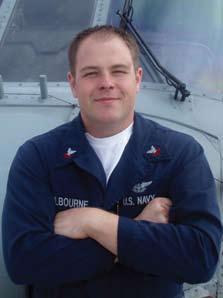
AE2 Christopher Kilbourne HSL-49
While embarked aboard USS Thach (FFG-43), Petty Officer Kilbourne went beyond his normal job responsibilities by discovering a hazard and taking positive steps to rectify it. A detachment aircraft had
AM3 Allen Gibson VFA-94
After repairing aircraft 400’s inertial navigation system during a rescue detachment, Petty Officer Gibson noticed the left nose tire appeared to have significantly less pressure than the right nose tire. He immediately contacted Maintenance Control and helped coordinate the acquisition of a new set of tires.
Closer inspection revealed the tire had deflated, and the bead had broken away from the wheel. Petty Officer Gibson prevented a catastrophic blow-out of the nose-landinggear tire.
AD2 Evens Pierre-Paul HSL-40
While supervising the drainage of an aircraft fuel sample on an SH-60B, Petty Officer Pierre-Paul noticed a major fuel leak on the aircraft. He immediately directed a fuel-spill team on scene and simultaneously put himself under the leak to secure a faulty fuel-sump valve.
Petty Officer Pierre-Paul’s attention to detail and quick reactions avoided a potentially dangerous situation. Through proper procedures and a take-charge attitude, he was able to stop and contain the leak before any harm came to the environment or the aircraft.
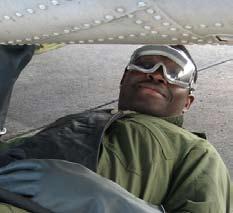
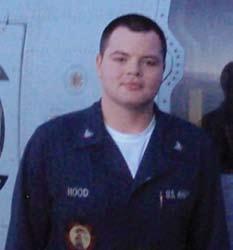

AE2(AW) Marshall Minot HSL-51 Det.4
While acting as flight-deck director, Petty Officer Minot recognized an unannounced ship turn during a helicopter move—a dangerous situation. He made a verbal call and hand signal to chock and chain the aircraft. His instinctive and assertive order for chocks and chains likely saved both the brake rider and helicopter, which might have rolled over on the tilted flight deck during a sharp turn.
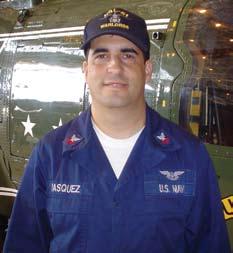
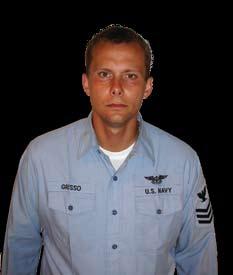
AT2(AW) Jurgen Vasquez HSL-51
Petty Officer Vasquez was the fire guard and chock runner for Warlord 717. While standing on the port side of the aircraft, waiting for the signal to pull chocks, he noticed movement near the tail cone. He went to the starboard side of the helicopter and saw both tail-drive-shaft covers were unfastened. He told the plane captain, who signaled the pilots to shut down. Petty Officer Vasquez’s quick reaction and attention to detail prevented a hazardous situation from developing.
AM3 Brandon Hood HSL-49
During a countermeasures washdown of the O-2 level aboard USS McClusky (FFG-41), Petty Officer Hood noticed water leaking onto a helicopter. Saltwater had infiltrated the hatch above the port helicopter hangar, and Hood immediately made the call to terminate the wash.
The detachment maintainers limited the saltwater exposure with an immediate fresh-water washdown. Without Petty Officer Hood’s actions, the aircraft would have had severe salt-water damage.
AM2 Jocelyn Joseph HSL-51
During corrosion-prevention work at sea on Black Beard 01, Petty Officer Joseph noticed a series of cracks in the secondary collective servo. The cracks were in an inconspicuous area of the SH-60F’s hydraulic bay. After informing Maintenance Control, resulting in downing the aircraft, he helped replace the component and saw it through the FCF a day later. His attentiveness to the job prevented a catastrophic failure of the servo.
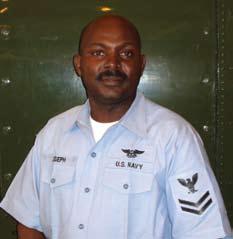
AM1(AW) Jason Grisso VAW-126
While preparing a Hawkeye aircraft for aircrew man-up, Petty Officer Grisso noticed slight differences on the starboard mainmount tire. Looking at the tire sidewall more closely, he saw different size, ply and cut parameters than what he had seen the last eight years of working on C-2 and E-2 aircraft. He subsequently compared sidewall ply ratings with that of the port mainmount tire and confirmed his suspicion of the incorrect tire mount. He radioed Maintenance Control for further corrective action.
AM3 Ivan Kennedy VAQ-137
While serving as a flight-line troubleshooter, Petty Officer Kennedy spotted a hydraulic leak in the left wheelwell. Further investigation revealed a cracked hydraulic line in the landing-gear system. He immediately notified the QA representative for the launch and downed the aircraft.
Had this discrepancy gone unnoticed, the aircraft could have experienced a catastrophic hydraulic leak while airborne.
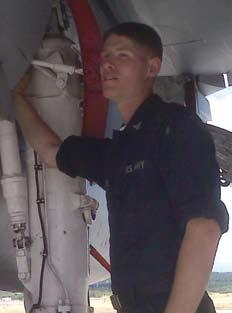
AD2 Charlie Tran HSL-49 Det. 4
Petty Officer Tran found a two-inch gouge on the trailing edge of an aircraft’s tail-rotor paddle during a post-flight tail-pylon folding. Further investigation revealed that the tail-rotor de-ice harness had detached from the paddle, struck the tail-rotor blade, and caused significant damage. He immediately notified his chain of command and single-handedly removed and replaced the tail-rotor paddle. He also took the initiative to inspect the other detachment aircraft and discovered damage to their harnesses.
Petty Officer Tran identified a major hazard, prevented a possible mishap, and his actions resulted in a fully mission-capable aircraft within 24 hours.
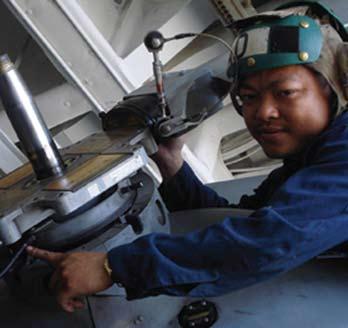
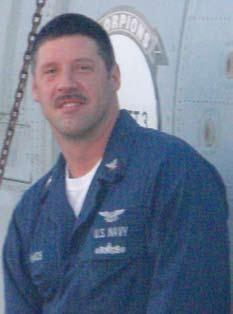
AD3 Eddie Ramos HSL-49
Petty Officer Ramos noticed whitepowder corrosion protruding from sealant on the accessory module of Red Stinger 103. Considering the critical functions of the accessory module and magnesium’s high susceptibility to rapid corrosion, he removed the remainder of the potting compound.
Further inspection revealed severe pitting in multiple areas on the accessory module—a major hazard.
Shingo Silver Medallion Awards
By Jim Markle
Naval Aviation Maintenance is silver across the board. Proudly displaying their Shingo Silver Medallion awards (from left to right), Capt. Timothy S. Matthews, Commanding Officer Fleet Readiness Center Southeast; Col. David A. Smith, Commanding Officer Fleet Readiness Center East; Capt. Michael Kelly, Commanding Officer Fleet Readiness Center Southwest; and RDML Paul A. Grosklags, Commander Fleet Readiness Centers pose after the fourth annual public sector Shingo Prize award ceremony held at the Crystal Gateway Marriot in Washington, D.C. on Thursday, Oct. 9, 2008. The Shingo awards were established in 1988 to promote awareness of lean manufacturing concepts and recognize organizations that achieve world-class manufacturing status. There are three award levels: The Shingo Prize, Silver Medallion, and Bronze Medallion. Only four public sector organizations across the U.S. received Silver Medallions, and three of those were FRCs.
Mr. Markle is a public affairs specialist at Fleet Readiness Center Southwest.
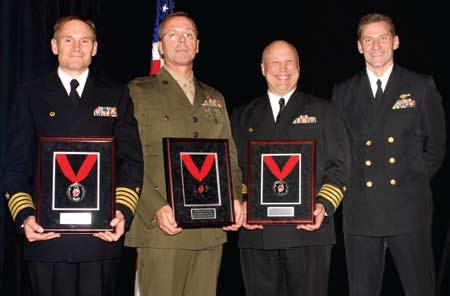
Photo by Steve Fiebing
crossfeed
Maintenance Officer
Cdr. Bert Ortiz bert.ortiz@navy.mil
Editorial Coordinator
MSgt. Michael Austin michael.z.austin@navy.mil
Egress/Environmental Systems
Things That Go Boom Can Be Fatal
By AMEC(AW) Eric Wickham
Problem: Egress and ALSSrelated ordnance stored in work centers longer than the allowable timeframe can create a dangerous and possibly fatal work environment. Recent surveys revealed a trend of ordnance not being transferred from a work center to an RSL when not immediately needed for maintenance. The chance of injury is greatly increased in the event of a fire in maintenance spaces.
Solution: We are responsible for our personnel’s safety at all times. It is imperative that we follow the guidelines and procedures set forth in our ordnancehandling manuals. NAVSEA OP 5 para.11-6.3 outlines the storage facility and timeline requirements for work-center temporary storage.
Best Practices: Work centers that are vigilant in their housekeeping tend to be more vigilant in safety and related programs. Take some time and look around your respective work centers. You may be surprised what you find in that box that has been sitting in the corner since before you checked in. Commands that are doing this right include VFA-136, VAQ-129 and CMO-10.
Chief Wickham is a maintenance analyst at the Naval Safety Center.

Safety
Don’t Let Your Eyewash Station Become an Eyesore
By AMCS(AW) Robert Chenard
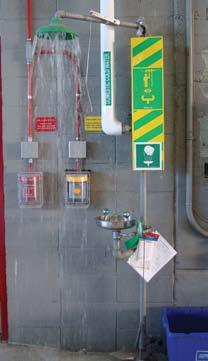
Problem: Some commands are not maintaining eyewash stations. These survey photos show blocked, dirty, and poorly placed eyewash stations.
Solution: Two CSEC questions (with references) are relevant: • Do your eyewash stations meet all safety requirements? Ref: COMNAVAIRFORINST 4790.2A, Chap7, para.7.1.8.2.1; OPNAVINST 5100.19E, Vol.1, Part 1, B0508 a through g; OPNAVINST 5100.23G, para.1902a and ANSI Z358.1 • Are your eyewash stations periodically activated and functionally tested in accordance with the required periodic maintenance? Ref: COMNAVAIRFORINST 4790.2A, Chap 7, para.7.1.8.2.1; OPNAVINST 5100.19E, Vol.1, Part 2, B0508.a(10); OPNAVINST 5100.23G, para.1902a
OPNAVINST 5100.23G states, in part, that “All such emergency facilities shall be located where they are easily accessible to those in need. Work centers shall activate plumbed eyewash units weekly for a period long enough to verify operation and flush the line. Inspection and maintenance tags should be placed on selfcontained eyewash units to document most current inspection/maintenance. Periodic maintenance shall include cleaning of the unit, replacement of water (depending on manufacturer’s recommendation), and checking for proper operation.” Look at the picture with the debris on the eyepiece again. That is bird excrement! Would Water flows onto electrically you want to have that flowing into your own hard-wired fire alarms eye if you needed to use the eyewash?
Blocked by trip hazards
Dirty with bird excrement
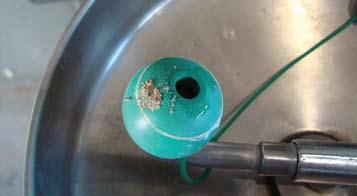
Best Practice: Make all hands responsible for these emergency devices. Don’t just leave it for the safety petty officer! If you see something wrong with an eyewash station, tell Maintenance Control. If it only needs cleaning, do it. You may be the one who needs it next!
Senior Chief Chenard is a maintenance analyst at the Naval Safety Center.
Quality Assurance
Tool-Control Trends and Analysis for 2008 Show Deficiencies
By MSgt. Michael Austin
Problem: Most squadrons surveyed in 2008 had deficiencies in tool-control practices and procedures, specifically: • Incomplete signatures and documentation on the required forms • Inconsistency between QA’s missing/broken/ worn control-numbers log and the final source documentation maintained by the tool-control manager (TCM) in the tool room • The QA’s logbook for tool-control-assignment numbers often were left blank for final disposition of the report.
Solutions: COMNAVAIRFORINST 4790.2A, Chap 10.12.3.9 states that the program monitor shall: • Conduct missing-tool investigations and annotate findings on the Missing/Broken/Worn Tool Report or FRC equivalent form. • Keep a log to assign a report number to each Missing/Broken/Worn Tool Report. A sequential numbering system shall be used and consist of year, type of report, and serial number, for example, 95-M001 (M = missing), 95-B002 (B = broken), or 95-W003 (W = worn). The logbook must contain: report number, calendar date, initiated by, work center, tool box/item number, nomenclature, investigator assigned, and final disposition.
COMNAVAIRFORINST 4790.2A Chap 10.12.4.3, O-level and “IMA Missing Tool Procedures” state: • The work center immediately notifies Maintenance Control or Production Control of a missing tool and conducts a thorough search of the work area(s), using and filling out the Missing/Broken/Worn Tool Reports in their entirety.
Note that you must treat a broken tool with missing pieces as a missing tool.
COMNAVAIRFORINST 4790.2A, Chap 10.12.3.2 states that the MO/FRC Equivalent shall: • Not release aircraft/equipment for flight/operation, in the event a tool or part of a tool is missing and not recovered, until an investigation is conducted to confirm the tool/tool part is not in the aircraft/equipment. O-level and FRC activities will use the Missing/ Broken/Worn Tool Report or an equivalent FRC form. During the absence of the MO/FRC equivalent officer, the AMO/FRC equivalent shall perform this function.
Best Practice: The best practice is having an
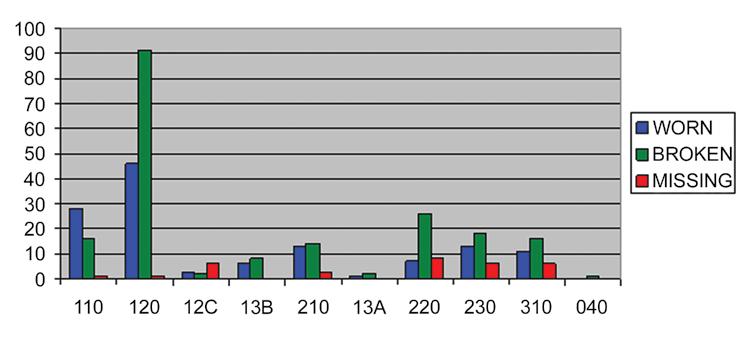
YEARLY TOTAL TOOL TRENDS
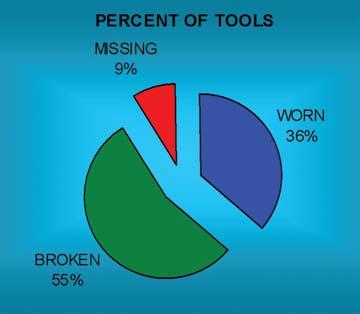
By AEC(AW) James Esslinger
Problem: Many squadrons and I-levels are unaware of new requirements and tools associated with aircraft wiring.
Solutions: Two very important new acronyms that every AE and AT should know are JSWAG (joint-service wiring action group-formerly known as NAVWAG) and WAIT (wiring awareness inspection techniques).
JSWAG is a branch of the Propulsion and Power Engineering Department at NAVAIR. Their website is http://www.navair.navy.mil/jswag/. The annual JSWAG conference was held in early November. Expect next year’s conference to take place around the same time of the year and most likely in the same location (Virginia Beach). The JSWAG conference is a great venue to find out actions that already are in place to better the aircraft-wiring environment. It also is a great place to submit new action chits for the team to assist in resolving your concerns or needs. Here are some recent items: • Zipties no longer authorized for use on military aircraft. This rule already has been placed in the 505 manual. • Hinged-type cushion clamps authorized for use as suitable replacements for the original harnessinstallation clamps. experienced tool-control monitor or QA representative accompany the work center or division during the entire process of the Missing/Broken/Worn Report and investigation. They should make sure the enclosures from COMNAVAIRFORINST 4790.2A, figures 10.12-1 and 10.12-2, are completed. This process ensures that the TCM and QA have the same corresponding documentation, and follow-up can be annotated for final disposition. The investigative process and information from the accurate BTR log can be used in trend analysis, allowing the unit to identify areas for specific training or special audits.
VFA-37 received a Bravo Zulu recently because they used a computerized tool-control analysis chart. Using this month-by-month tool-trend chart is a progressive and proactive approach to identify trends and training needs for the tool-control program.
Master Sergeant Austin is a maintenance analyst at
Avionics
New Requirements and Tools for Aircraft Wiring
the Naval Safety Center.
• New tools have been authorized for use, such as the Infra-Red heat gun.
WAIT training is a coordinated effort to help the avionics technician better understand how to inspect for, identify and repair wiring discrepancies before they become an issue. This is great initial hands-on training, as well as excellent refresher training for all electricians. All the information you need to request this training is available on the JSWAG website.
Best Practices: If you are an AE or AT supervisor or the LPO of your work center, you actively should be involved with this group. Every aircraft, whether new or 20 years old, has wiring issues. If you neglect them by not inspecting, you’re putting people at risk.
The NA 01-1A-505 manuals have been updated a few times in recent years and have been consolidated into four manuals. You can expect regular updates, and a fresh revision should be available by September 2009.
More leaders of the wiring and electrician community should attend these conferences. The turnouts are good, but the greater our stretch, the better we can effect change in instilling proper aircraft-wiring techniques for military aircraft today.
Chief Esslinger is a maintenance analyst at the Naval Safety Center.
Class C Mishap Summary
By MSgt. Michael Austin
From Sept. 20, 2008, to Dec. 9, 2008, the Navy and Marine Corps had 20 Class-C mishaps involving aircraft.
After reviewing several Class C mishaps and initial investigations, one common, major theme stood out in all these incidents. That theme is “situational awareness,” commonly referred to by most aircrew and pilots as SA. Maintainers and ground-crew coordinators not using good SA with respect to their location usually miss key factors in the chain of events leading up to a mishap. Here are some recent mishaps that could have been avoided if good SA had been used: • Two maintainers had to repair an aircraft’s onboard oxygen generating system (OBOGS). The experienced maintainer briefly left the other maintainer unattended during removal of the oxygen monitor. After removing the OBOGS component, the junior maintainer closed the aircraft canopy. He did not notice the cannon plug and wiring still was under the left side of the canopy sill. The lack of SA and maintainer supervision resulted in damage to the canopy and OBOGS. • An FA-18A ingested a cranial into the No. 2 engine during a maintenance turn. There were many causal factors associated with this mishap. The first were poor communication and lack of assets. The plane captain did not effectively supervise the event and did not relay vital information. Only the No. 1 engine was supposed to be turned at 80 percent to troubleshoot the problematic subsystem. Only one protective-intake screen was available and installed. The No. 2 engine screen was NRFI and not installed. Only four maintainers were present during the maintenance turn, and they lacked supervisors for coordination and proper placement of personnel. The lack of communication, safety barriers, and situational awareness, coupled with the placement and running both engines to 80 percent instead of one, resulted in one maintainer’s cranial being pulled off his head and ingested into the No. 2 engine. This situation shows that any step in the chain of events could have been avoided if just one of the maintainers had used SA and followed standardized practices and procedures.
During 2008, there were 41 Class-C maintenancerelated mishaps. After detailed investigations and analysis of these events, the primary causal factors were lack of supervision, procedures not followed, poor judgment, and lack of situational awareness. The total monetary cost from these mishaps ranged from $820,000 to $ 4,100,000, based on severity.
The accompanying graph depicts 103 events of submitted Class C mishaps. The areas included are: aircrew error, material events, and maintenance error.
2008 AVIATION CLASS C MISHAPS IN REVIEW
Number Mishaps
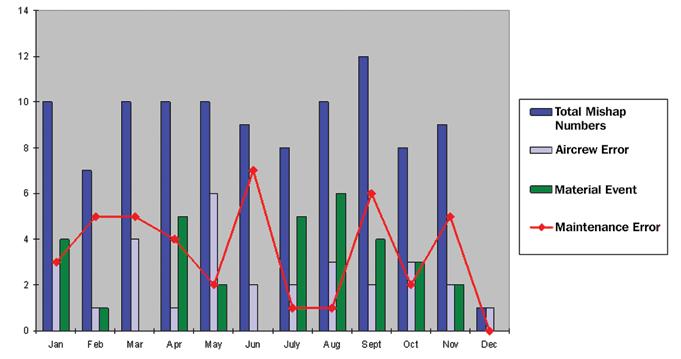
Class-C mishaps through December 12, 2008
Sierra Helping Sailors and Marines Help Themselves Sierra H otel
Commander, Naval Safety Center would like to recognize the following aviation commands for their recent participation in safety surveys, culture workshops, and maintenance malpractice resource management (MRM) presentations for the months of October-December.
Safety Surveys
October: November: December:
VFA-136 HMM-764 VFA-204 HSC-26 VX-31 VR-54 HSC-28 VX-9 HMLA-773 HMH-366 VMU-3 FRC W/MALS-41 HMLA-467 VQ-3 VMFA-112 VFA-105 VQ-4 VMGR-234 VFA-37 VQ-7
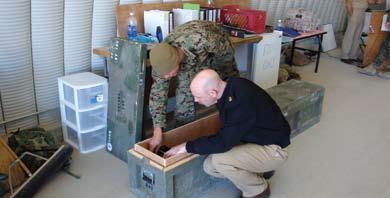
MRMs AMO School: Whiting Field, FL VFA-32: NAS Oceana HSC-28: NS Norfolk VAW-121: NS Norfolk VFA-136: NAS Oceana


Culture Workshops VP-1 ETD Pacific (HI) VP-69 HSL-46 HT-18 VPU-2 HS-6 VMFA-314 VMFA (AW)-224 VFA-154 FRC-MA (Patuxent River, MD) HT-8 TACRON-12 FRC-MA (New Orleans, LA) HSC-3 HSC-8 HSL-37 HMLA-773 Det B (PA) VP-47 VFA-106 FRC-SE (Jacksonville, FL)
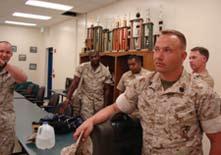
For more information or to get on the schedule, please contact: Safety Surveys: Maj. Anthony Frost, USMC at 757-444-3520 Ext. 7223, MRM: AMCS(AW) Robert Chenard at 757-444-3520 Ext. 7221, Culture Workshop: Cdr. Duke Dietz at 757-444-3520 Ext. 7212.
